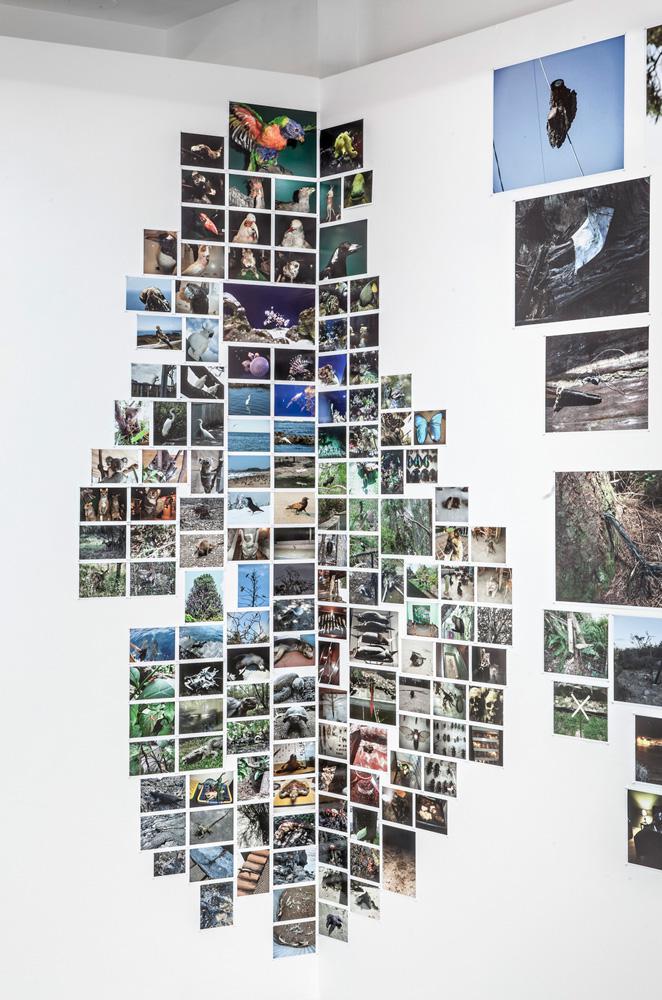For more than 30 years, Jayce Salloum has been producing work that engages with the historical, social and cultural contexts of place. Some works have focused on specific places—like 1993’s Up to the South (made with Walid Ra’ad) exploring terrorism, colonialism, and the resistance movements in the south of Lebanon, or 2010’s دلِ که سوز ندارد, دلِ نیست (the heart that has no love/pain/generosity is not a heart), which looked at Afghanistan’s Bamiyan Valley. Other projects, like the exhibition “location/dis-location(s): contingent promises,” which closes this Saturday at MKG127, put Salloum’s skill as curator of an archive towards photographs he has taken across various places, offering a sprawling but structured nebula of geography and chronology.
Just inside MKG127’s gallery door is a cluster of several hundred photographs of flowers. Though the throng of images is organized by plant colour and form, Salloum’s chaotic grouping could not be further from Karl Blossfeldt’s plant studies. For Salloum, photography seems an observational tool, not a precision instrument. “location/dis-location(s): contingent promises” is part diary, part travelogue and part personal attempt to rationalize the world around him.
Salloum’s organizational logic comes and goes, seemingly a mix of formal, thematic and idiosyncratic inter-image connections. The clusters of images seem organic but rigorous; the photographs lead viewers though natural and urban environments across the globe. The work feels like the record of constant traveller, making place an abstraction without purporting universality. The project seems tied to lived experience, and at times reads like photographic remnants of psycho-geographic wanderings: Salloum the flâneur organizing his travels in retrospect through an intentionally oblique frame to cause a dislocation from original context.
Salloum’s photographs have a degree of immediacy; they are active—pinned to the wall in a way that suggests utility. The sheer number of works in the show seems a celebration of the anarchic production of amateurs and an affront to notions of any “decisive moment” or degree of finitude. Salloum plays with our belief in photography as a tool to rationalize the surrounding world and he leaves us with a puzzle that is partially completed, but wholly intriguing.









